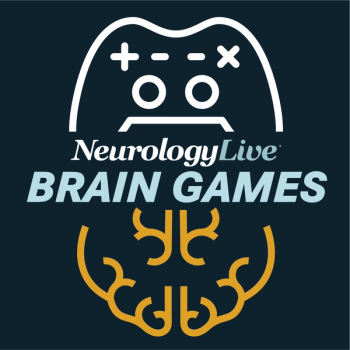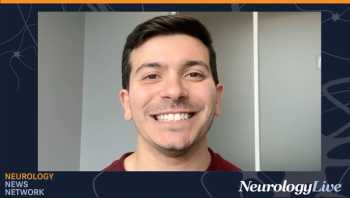
Newly Published Phase 3 SAPPHIRE Study Highlight Therapeutic Potential of Apitegromab in Spinal Muscular Atrophy
Key Takeaways
- Apitegromab showed significant motor function improvements in SMA patients on SMN-targeted therapies, as demonstrated in the phase 3 SAPPHIRE trial.
- The trial enrolled 188 participants aged 2 to 21, achieving statistically significant gains in HFMSE scores compared to placebo.
Scholar Rock’s phase 3 SAPPHIRE trial of apitegromab revealed that the treatment led to improved motor function in patients with spinal muscular atrophy over a 52-week period.
Scholar Rock has published results from its phase 3 SAPPHIRE trial (NCT05156320) of apitegromab in children and adults with spinal muscular atrophy (SMA) in The Lancet Neurology. The trial, which was used to support apitegromab’s biologics license application (BLA), showed that treatment with the agent was associated with improvements in motor function, even while patients received ongoing survival motor neuron (SMN)-targeted therapy.1
A decision on apitegromab’s BLA, which remains under review, is expected by September 22, 2025. SAPPHIRE, which was originally read out in October 2024, is part of the company’s submission, which also includes the phase 2 TOPAZ trial (NCT03921528).2
Led by
“The robust apitegromab data reinforce that effective SMA treatment regimens should address both motor neuron preservation and muscle function,” Akshay Vaishnaw, MD, PhD, president of R&D at Scholar Rock, said in a statement.1 “To improve outcomes and support activities like breathing, eating, swallowing, standing and walking, which require muscle strength and motor function, a comprehensive approach targeting both components of the disease is critical. The SAPPHIRE findings support the value of muscle-targeted therapies for children and adults living with SMA.”
READ MORE:
In SAPPHIRE, the mean difference in change from baseline on the HFMSE was 1.8 points (P = .019) for all patients aged 2 to 21 years receiving apitegromab at 10 mg/kg or 20 mg/kg (n = 106) compared with placebo (n = 50). In this group, patients treated with 20 mg/kg of apitegromab (n = 53) showed a 1.4-point mean difference compared with placebo (P = .11). Subgroup analyses across age, type of SMN-targeted therapy, age at SMN-targeted therapy initiation, and geographic region demonstrated clinically meaningful and consistent improvements in motor function with apitegromab.
For secondary end points in the 2- to 12-year-old subgroup, patients treated with apitegromab demonstrated greater functional gains compared with placebo. At 52 weeks, 30.4% of patients receiving apitegromab achieved at least a 3-point improvement in HFMSE compared with 12.5% of placebo patients, whereas 19.6% achieved at least a 4-point improvement versus 6.3% on placebo. Additional positive trends were reported across other measures of motor function, including the Revised Upper Limb Module (RULM) and World Health Organization motor development milestones.
Previously presented at the
In the phase 2 TOPAZ trial,
The analysis population pooled the nonambulatory patients and included patients who received either low dose (2 mg/kg) or high dose (20 mg/kg) apitegromab. A total of 11 patients in the population had scoliosis surgery during the study and their data was excluded from any HFMSE or RULM assessments at 48 months. Using the remaining patient cohort, the mean change in RULM for the 2-21 age group (n = 22) was 3.6 points (95% CI, 2.0-5.3) and 4.5 (95% CI, 2.7-6.3) for the 2-12 age group (n = 18).
In terms of
REFERENCES
1. Pivotal SAPPHIRE Trial Data Published in The Lancet Neurology: Apitegromab Demonstrated Significant Motor Function Gains for Children and Adults with SMA on SMN-Targeted Treatment. News Release. Scholar Rock. Published August 14, 2025. Accessed August 18, 2025. https://investors.scholarrock.com/news-releases/news-release-details/pivotal-sapphire-trial-data-published-lancet-neurology
2. FDA Grants Priority Review for Biologics License Application (BLA) and EMA Accepts Marketing Authorisation Application (MAA) for Apitegromab as a Treatment for Spinal Muscular Atrophy. News Release. Scholar Rock. Published March 25, 2025. Accessed August 18. https://investors.scholarrock.com/news-releases/news-release-details/fda-grants-priority-review-biologics-license-application-bla-and
3. Scholar Rock Reports Apitegromab Meets Primary Endpoint in Phase 3 SAPPHIRE Study in Patients with Spinal Muscular Atrophy (SMA). News Release. Scholar Rock. Published October 7, 2024. Accessed August 18, 2025. https://investors.scholarrock.com/news-releases/news-release-details/scholar-rock-reports-apitegromab-meets-primary-endpoint-phase-3
4. Scholar Rock Presents New Phase 3 SAPPHIRE Data at the 2025 Muscular Dystrophy Association Clinical & Scientific Conference. News Release. Scholar Rock. Published March 16, 2025. Accessed August 18, 2025. https://investors.scholarrock.com/news-releases/news-release-details/scholar-rock-presents-new-phase-3-sapphire-data-2025-muscular
5. Scholar Rock to Present Comprehensive Update at 2025 Annual Cure SMA Research and Clinical Care Meeting, Including Positive Results from Pivotal Phase 3 SAPPHIRE Trial. News Release. Scholar Rock. Published June 23, 2025. Accessed August 18, 2025. https://investors.scholarrock.com/news-releases/news-release-details/scholar-rock-present-comprehensive-update-2025-annual-cure-sma
6. Scholar Rock reports second quarter 2024 financial results and highlights business progress. News Release. Scholar Rock. Published August 8, 2024. Accessed August 18, 2025. https://investors.scholarrock.com/news-releases/news-release-details/scholar-rock-reports-second-quarter-2024-financial-results-and
Newsletter
Keep your finger on the pulse of neurology—subscribe to NeurologyLive for expert interviews, new data, and breakthrough treatment updates.



































